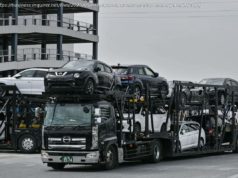The U. S. carried out a mission alongside fighter jets from South Korea and Japan four days after North Korea launched its first-ever intercontinental ballistic missile
North Korean state media have sharply criticized a recent practice bombing run by two U. S. B-1B bombers on the Korean peninsula, calling it a dangerous move raising the risk of nuclear war.
A commentary Sunday in the ruling party’s Rodong Sinmun newspaper accused the U. S. of “reckless military provocations” and said the danger of nuclear war is reaching an extreme pitch. The commentary was reported on in English by the state Korean Central News Agency.
The Pentagon flew two B-1B bombers over the Korean Peninsula Friday in a show of force, carrying out a 10-hour, multipart mission alongside fighter jets from South Korea and Japan four days after North Korea launched its first-ever intercontinental ballistic missile.
U. S. Pacific Command disclosed the operation late Friday, saying the mission was a demonstration of the “ironclad” American commitment to allies in the region. The Air Force launched the planes from Andersen Air Force Base on Guam, flying west across the Pacific before joining South Korean F-15s and dropping inert bombs over Pilsung Range, a training area in the northeastern corner of South Korea.
“U. S. bombers and Republic of Korea fighters are just two of many lethal military options at our disposal, ” said Lt. Gen. Thomas Bergeson, the deputy commander of U. S. Forces Korea. “This mission clearly demonstrates the U. S.-ROK alliance remains prepared to use the full range of capabilities to defend and to preserve the security of the Korean Peninsula and region.”
The U. S. bombers flew back to Guam alongside Japanese F-2 fighters over the East China Sea. The U. S. military continues to train with Japanese forces to make sure they are collectively ready to defend against an attack, said Lt. Gen. Jerry Martinez, the commander of U. S. Forces Japan.
It’s the latest show of force in the region by the United States and its allies since Tuesday’s test of an ICBM by North Korea. On Wednesday, U. S. and South Korean forces demonstrated their ability to fire ground launched cruise missiles with the U. S. Army’s Tactical Missile System and the South Korean Hyunmoo Missile II. Both missiles have a similar range and can hit targets more than 180 miles from their launch site. In addition to showcasing their ability to fire into North Korea, Reuters reported Friday that U. S. forces also have plans to test a controversial missile defense system, called THAAD that has recently been deployed to the peninsula.
North Korea’s launch of a two-stage ICBM, called the Hwasong-14, appears to have caught the United States off-guard. Following the missile’s launch, the Pentagon first classified it as an intermediate-range missile before admitting that the weapon’s 3,400-mile range qualified it as an ICBM. Despite condemnation from the international community and waves of new sanctions, North Korea has steadily advanced its missile program in recent months, leaving the White House with few options to deal with the rogue state.
Secretary of Defense Jim Mattis told reporters Thursday that America’s self-restraint “has prevented war in the face of provocations” and that economic and diplomatic efforts are ongoing with U. S. allies and China in an attempt to de-escalate the situation. “But obviously, any kind of effort by North Korea to start a war would lead to severe consequences, ” Mattis said.
Though North Korea’s ability to launch an ICBM is groundbreaking, the reclusive state face series of technical hurdles before its program has enough material for more nuclear tests and the ability to strike deep into the United States, experts say. The test, however, will likely change U. S. calculus when it comes to striking Pyongyang, as any military plan will have to weigh the possibility of a nuclear attack against the U. S. homeland.






